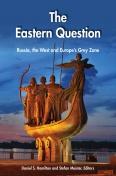Chapter 1 Eastern Challenges
Russia under Putin is an authoritarian system cloaked in the trappings of “democracy” yet run by a kleptocratic oligarchy that excludes all but a few insiders from political power and uses administrative resources to enrich itself and to control or suppress media, opposition and civil society. The rule of law and an independent judiciary exist only on paper. Through censorship, propaganda and efforts to silence elites and potential opponents through repression or cooptation, the regime seeks to maintain domestic support by convincing the public that the only alternative to its continued rule is chaos, instability and subservience to outside forces.
Russia’s actions abroad are directly linked to the Kremlin’s main goal of securing its political survival at home. Following the chaos and upheaval of the Yeltsin years, Putin’s first two terms in office rested on an implicit social bargain in which public passivity and the regime’s legitimacy were tied to greater stability and better economic performance. Annual growth rates of 7 percent between 2001 and 2008 trickled down to nearly every part of Russian society. Unemployment fell, poverty levels declined, and consumption boomed along with Putin’s popularity. In the 2004 presidential elections, Putin received 71 percent— much more than in his first election in 2000 (53 percent). Constitutional limits did not allow Putin to run in 2008, so he nominated Dmitri Medvedev, who obtained 70 percent of the vote—at par with Putin’s own 2004 result.
At about this time, however, Russia’s growth ran out of steam. The global financial crisis of 2008–09 changed the situation fundamentally, making it clear that the Russian economy had not diversified and in many areas had become uncompetitive. It had exhausted the sources fueling its decade-long growth—rising oil prices, unutilized production capacity, growth in retail lending, and the liberal reforms of the early 2000s. Instead of using nearly eight years of growth to diversify the Russian economy, dependency on the price for oil and gas grew over this period. Russia’s reserves helped buffer the blow, but Putin’s social contract was beginning to unravel.
Reforms could have come—in fact they were promised by Medvedev. But the decision for Putin to return was also a decision against modernization of the economy and serious reforms because they would have undermined the power position of the regime. Productivity growth and new investment would have required the government to reform the business and investment climate, reduce government ownership and intervention in the economy, protect private property, enforce contracts and fair competition, and curb corruption. Such initiatives would have collided with the entrenched interests of Putin’s extractive oligarchy of corrupt bureaucrats, politically connected business people and employees of state-owned companies, whose support had become even more critical to the regime’s survival.
Russia’s failure to implement reforms resulted in stagnating productivity and investment, massive capital flight, and meager growth. The regime used the country’s energy wealth to enrich itself rather than build a broader base of support by investing in Russia’s future by modernizing creaking infrastructure, deal with its horrendous demographic, health and environmental challenges, or shift from a resource-based economy to a more sustainable model.3 This means it remains extremely vulnerable to energy price fluctuations. The precipitous fall of these prices whacked Russia and plunged it into slower growth. By the time of the Crimea crisis, Russia’s economic growth had essentially come to a halt. Its GDP declined by 4 percent in 2015 and may decline by an additional 1–2 percent in 2016.
The regime tried to defuse rising discontent and deflect attention away from Russia’s growing economic woes by stepping up its propaganda and censorship and in conjuring internal enemies as the 5th column of the West. Putin then set forth a second informal social contract exchanging continued political loyalty for restoration of Russian national pride as a great power. Putin’s regime used its interventions into both Georgia and Ukraine to consolidate its hold on power at home, and since 2012 by fueling nationalist fervor while further repressing civil society and independent media. Enforcing Crimean annexation over Western opposition became an excellent opportunity for Putin to shore up his approval ratings. He has turned to anti-Western and anti-American approaches as a key source of his legitimacy, presenting his illiberal regime as a conservative alternative to Western liberal social, political and economic models and saturating his population with disinformation about how the West besieges the Motherland. His ratings remain high.
Over the longer term, economic and political pressures will continue and accumulate. Oil prices are unlikely to recover any time soon. Russia’s economic health is linked to its participation in the global economy, yet Russia has reacted to Western sanctions with import substitution and counter-sanctions of its own, which worsens the situation for the Russian people. The regime scrapped free trade with Ukraine and, after the downing of a Russian fighter, cut multiple trade, tourism and infrastructure ties with Turkey. Russia’s ambitious military modernization program has come at the cost of investments in health, education, and civilian infrastructure. The government has cut 2016 spending by about 9 percent and has stopped indexing pensions to inflation. While the Reserve Fund is sufficient to fund the budget deficit in 2016 and possibly in 2017, the numbers for 2018 do not seem to add up. Not surprisingly, the government has stopped producing three-year budgets, sticking only to annual ones. Net emigration of the most active and productive part of Russian society rose from 35,000 people a year from 2008 to 2010 to more than 400,000 in 2015.
Russia’s economic problems are daunting. Still, some perspective is warranted. The quality of life in Russia has improved dramatically since the Yeltsin years. Real incomes now exceed 2000–2002 levels by at least three times, if not more. While the real disposable income of an average Russian may have declined 8-9 percent percent over the past year, that is not enough to provoke widespread public opposition. Russia’s significant financial reserves can keep the economy afloat for another few years, while some degree of import substitution has reduced the price (and, of course, also the quality) of many daily goods. Military modernization shores up Putin’s support within the armed forces. And the regime’s political and informational control, the lack of a viable political opposition, and the regime’s capacity and determination to strike out at its opponents are all likely to reinforce Putin’s authority. In short, despite Russia’s domestic challenges, Putin and his regime is likely to be with us for some time, and even a change of president is unlikely to mean a fundamental change of the regime or system.
Read the full chapter by clicking on the box at right.


